Overwhelmed by all the landing page metrics you could be tracking for your active campaigns? You’re not alone.
There are countless metrics you could track to measure the performance of your campaign landing pages. And trying to track all of them is time consuming, if not impossible. So which ones should you focus on? Which ones will bring you the greatest measurable value and insight?
In this post, we’ll walk you through 6 of the most important landing page metrics you should be measuring your campaigns against, as well as a few critical optimization strategies to help you improve your site’s conversion rates.
1
Landing Page Sessions
The foundation of all landing page metrics, the sessions metric tracks the volume of visitors that actually end up on your landing page.
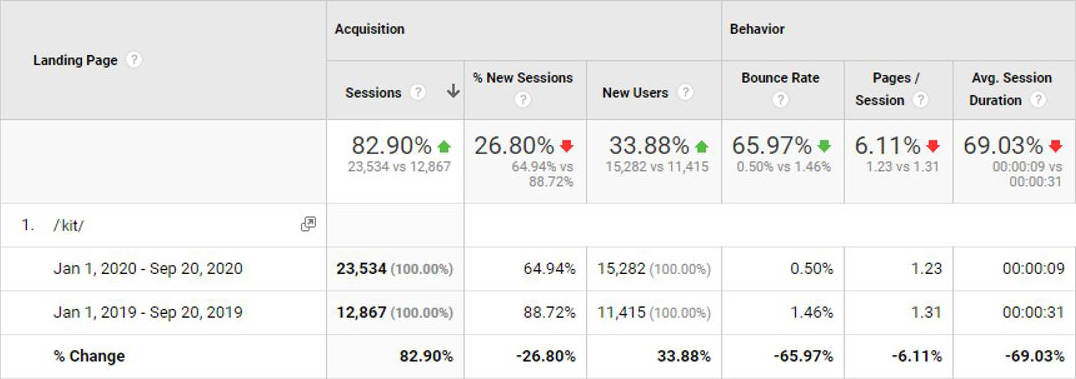
This sample shows sessions for the landing page are up significantly YoY, however, % of new sessions is down. % of new sessions is the percent of total users who came to the landing page for the first time.
2
Traffic Sources
To understand what is and isn’t working for your campaign, you must first understand where your traffic is coming from. This can help you see which promotional channels are bringing in the most traffic (and resulting conversions) to your landing pages. Is it your email nurturing or digital advertising campaigns? Your blog or social media efforts?
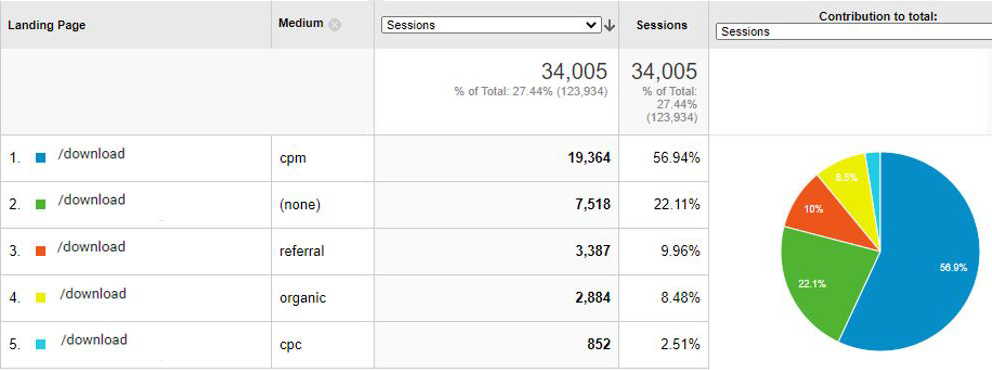
Here we see that CPM (cost per thousand impressions) is driving over half of all sessions to the landing page. Smart Zones or Google Display are examples of CPM campaign sources.
Remember that different types of visitors behave differently and will engage with your landing page in different ways. Here are a few examples of traffic sources:
- Direct traffic: site visitors who type your landing page URL into their browser to go directly to your page
- Organic traffic: visitors who find your page through a search engine, such as Google or Bing
- Referral traffic: visitors who find your landing page by clicking a link on another website or source
- Other sources tied to specific channels or campaigns, such as digital advertising, social media, email and PPC traffic

In this example, we see that CPM has driven the most sessions but delivered the fewest conversions for this particular goal. While organic didn’t drive the most volume of sessions, it has delivered the best goal conversion rate.
3
Average Time on Page
Monitoring how long visitors stay on your landing page will help you determine how valuable your page content is to your target audiences. And the more time users spend on your page, the higher their chances of converting.
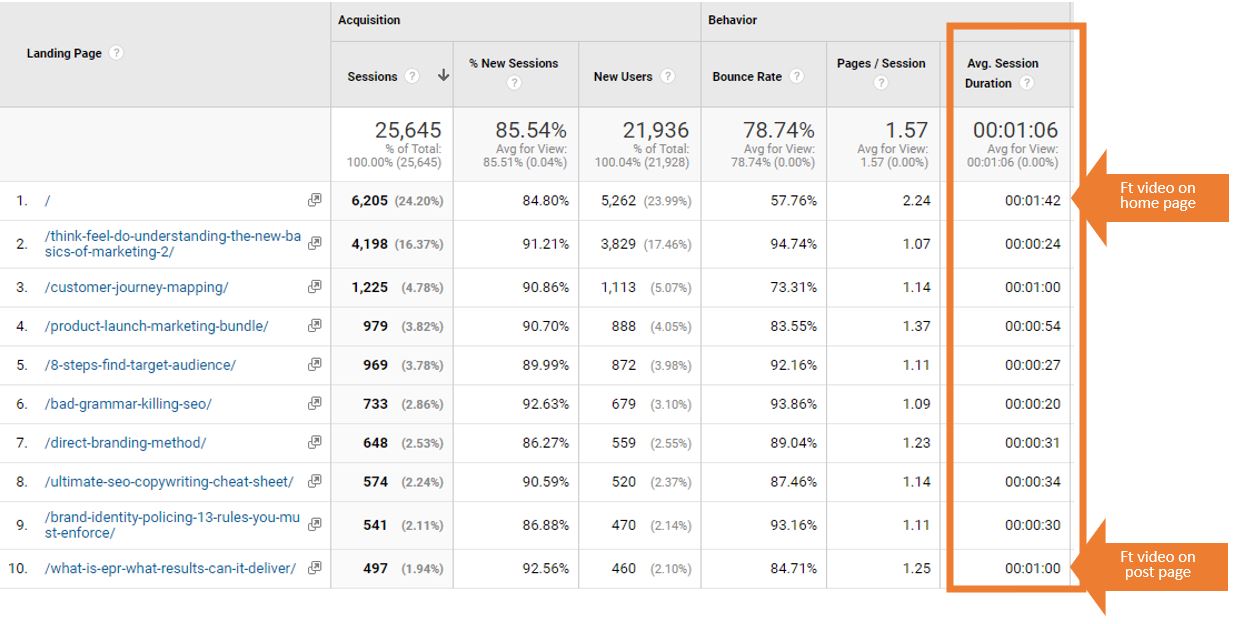
For these Top 10 landing pages, we see that pages with video content featured on the page/post have earned the longest average session durations.
If the average time on page is low, consider improving your landing page content, adding more interactive elements or other features that may help boost engagement.
4
Bounce Rate
The bounce rate is the rate at which new visitors visit your landing page and leave without doing anything, like clicking a link or completing a form.
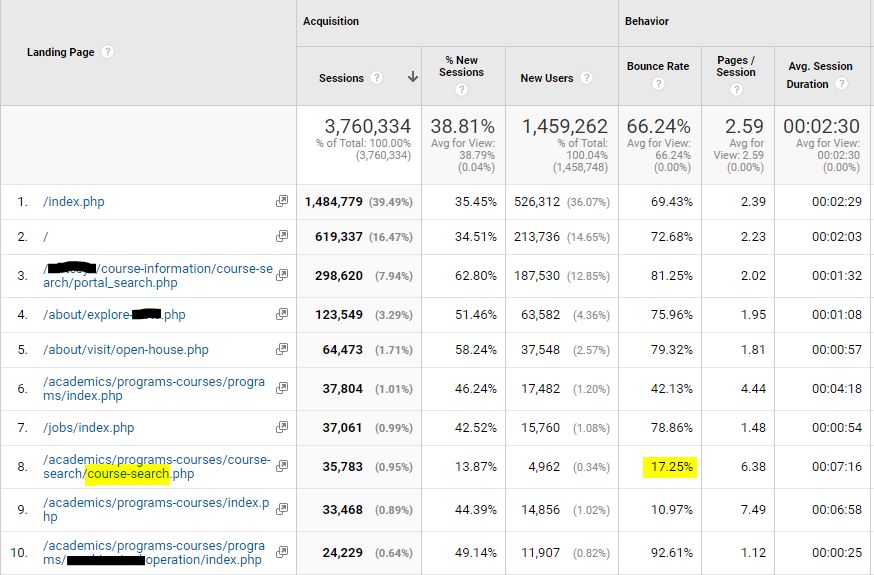
When visitors find and use this college’s Course Search tool, bounce rate decreases significantly. Fewer sessions for this landing page (ranked #8), indicates it is not prominently featured or easily found on the site.
A high bounce rate can mean a number of things, from poor user experience to a misleading or irrelevant offer. It could also mean that you’re not targeting the right people to begin with.
 BONUS RESOURCE:
BONUS RESOURCE:
Are You Making these Common Landing Page Mistakes?
5
Conversion Rate
Next, you’ll want to measure how many of those visitors are completing the desired action on your landing page (i.e. converting). The conversion action could be downloading your whitepaper, subscribing to your email list, requesting a demo, purchasing a product, and more.
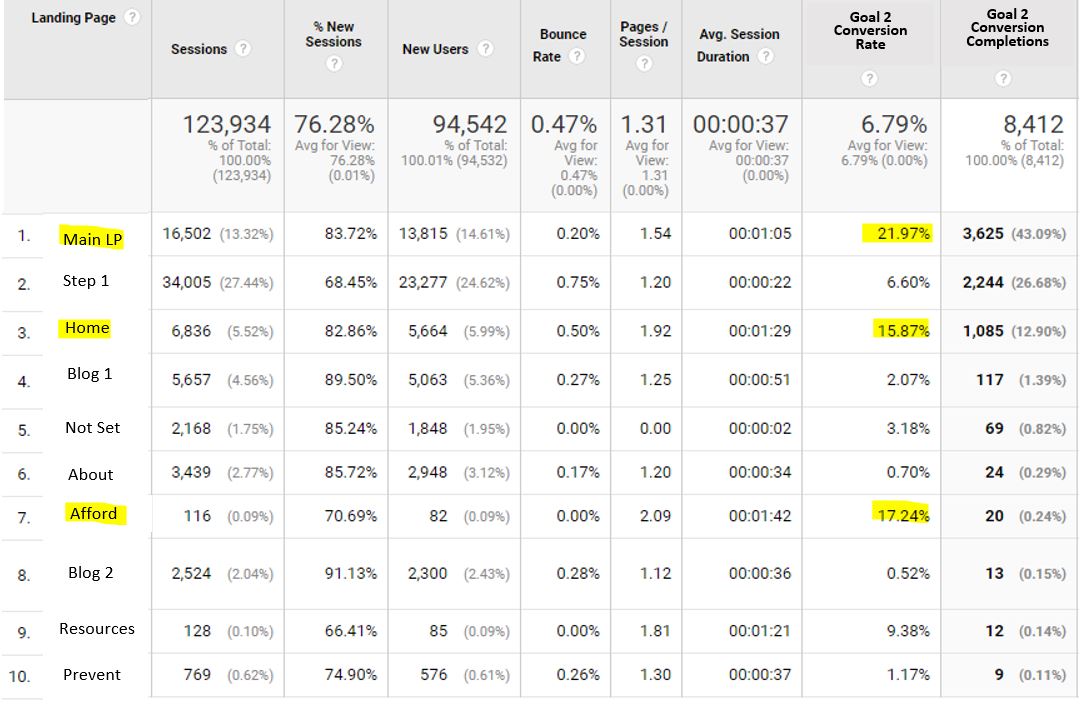
Our Top 10 landing pages lead to drastically varied conversion rates for Goal 2. We see that while the “Afford” page doesn’t draw session volume, users convert on Goal 2 at a very high rate.
To calculate your conversion rate, divide the number of conversions you get in a given time frame by the total number of people who visited your landing page and multiply it by 100%. You can also set up goals in Google Analytics to track the number of conversions on your landing page, as well as the percentage of visitors who converted.
 MORE ON CONVERSION RATES:
MORE ON CONVERSION RATES:
5 of the Most Common CR Questions, Explained
6
Cost per Conversion
Is the amount of money you’re spending on your campaign worth the number of leads you’re generating? Cost per conversion (also known as cost per referral) will help you understand how much it’s costing you to acquire a new lead.

This multichannel program cost $405,000 for the report period. The landing pages generated 8,512 Goal 2 conversions. The cost per conversion is $47.58.
To calculate cost per conversion, simply take your total spend divided by the number of conversions generated.
The best way to reduce your cost per conversion?
- Test, track and measure. Analyze all aspects of your campaigns to see what’s generating conversions and what’s not.
- Streamline your marketing spend. Pause or make adjustments to the low-performers, whether it’s high-level channels and audience segments or the nitty-gritty, such as keywords used in PPC advertising or individual banner ads and landing pages.
- Optimize your landing pages. Make sure your pages are engaging, mobile-friendly and relevant to your audiences’ needs and where they are in the buyer journey.
 ADDITIONAL TIPS:
ADDITIONAL TIPS:
7 Elements of a High-Converting Landing Page
Tracking your landing page metrics doesn’t have to be mysterious…
Especially when you’re focused on the right ones. And the payoff is even greater. You’ll have the data and insights required to improve your landing pages over time and understand which channels are most effective. You’ll also be able to align your messaging with your audiences’ needs and fill in any gaps in your lead generation efforts. And last but not least, optimize your marketing ROI.
Keep learning! Dig into the fundamentals of conversion rate optimization (CRO).






